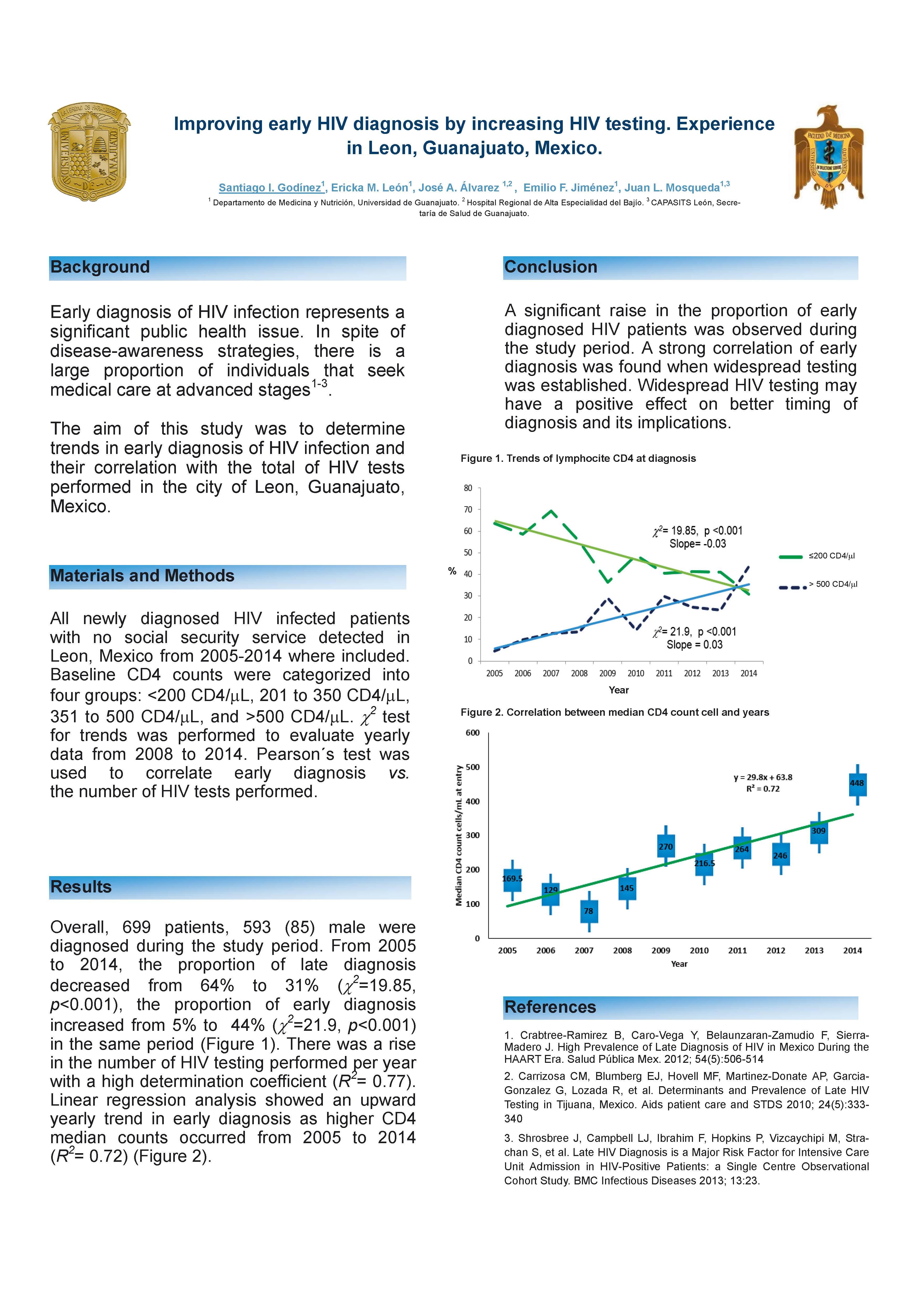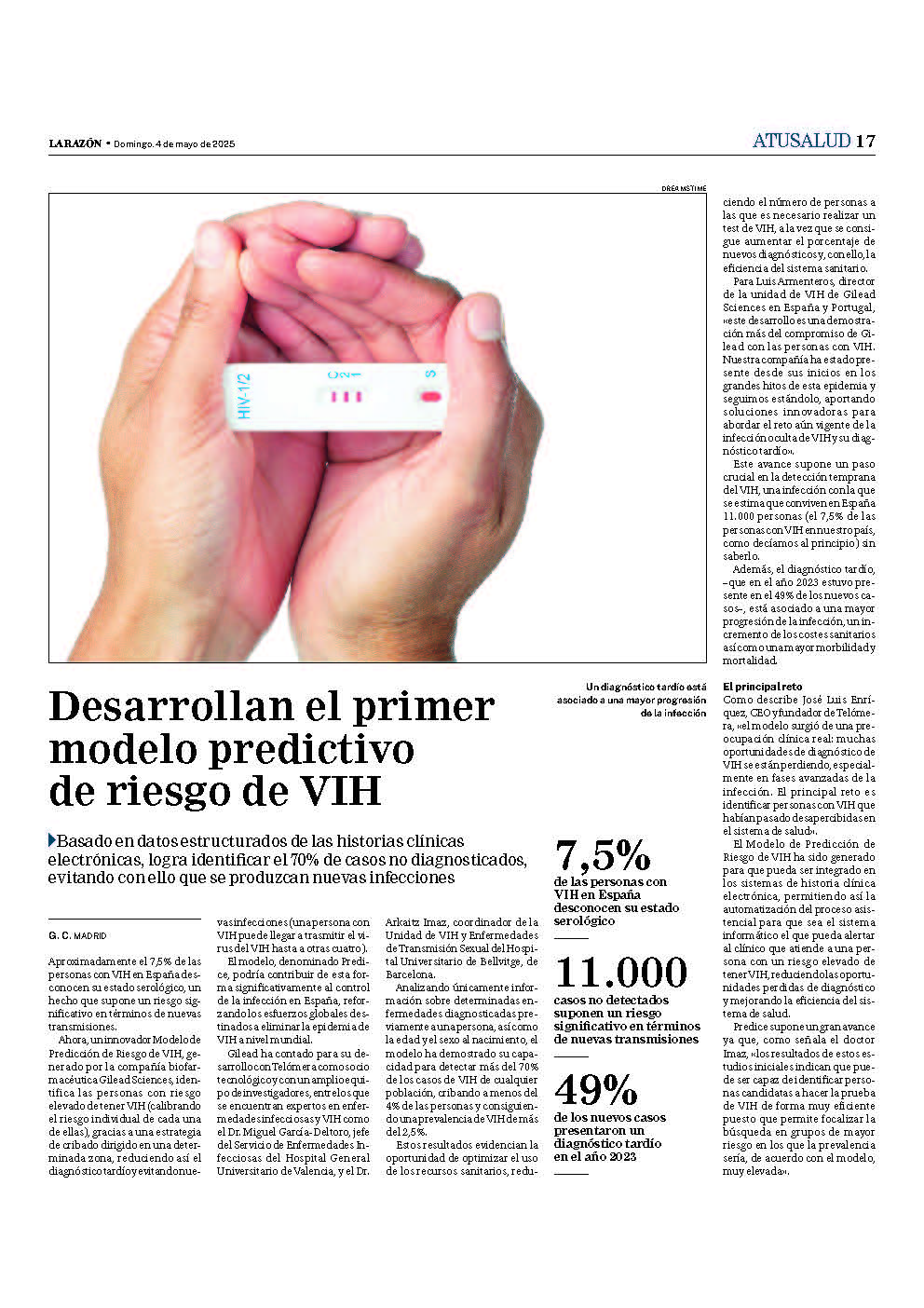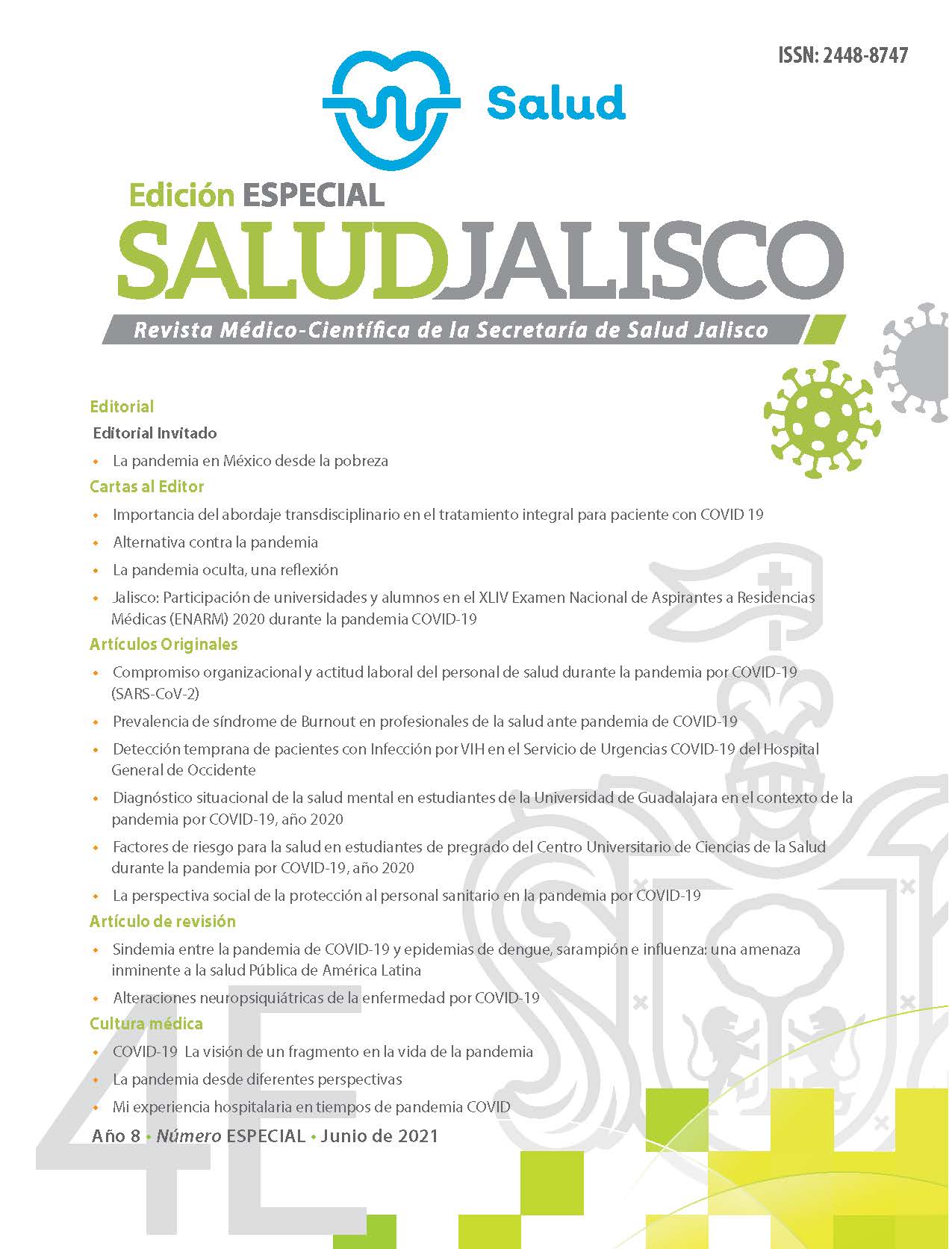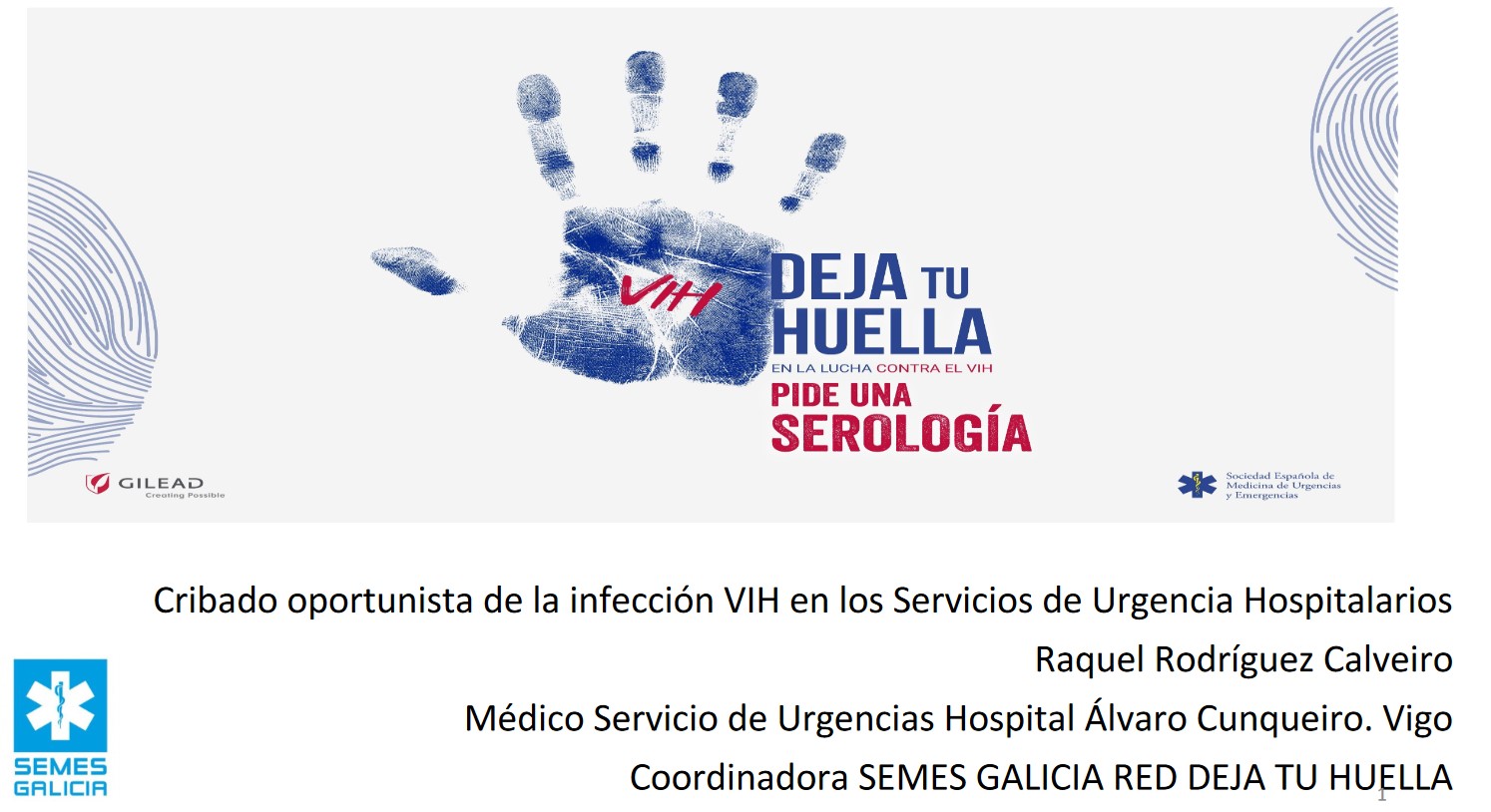Resum
Introduction: Early diagnosis in HIV represents a public health issue. In spite of disease-awareness strategies and follow up in HIV patients, there is a large proportion of individuals that seek medical care in an advanced stage [1Á3]. The aim of the study was to determine the temporal trends observed of early diagnosis and the correlation with the number of HIV tests in the city of Leon,Guanajuato, Mexico. Materials and methods: All newly diagnosed from 2005 to 2014, ARV naive, non-insured HIV patients in Leon, Mexico were included. Baseline CD4' counts were categorized into four groups: B200 CD4/ml, 201Á350 CD4/ml, 351Á500 CD4/ml and !500 CD4/ml (early diagnosis). To evaluate the proportion of patients in each category for the evaluated period and the number of HIV tests done for the
period of 2008 to 2014 the X2 test for trends was performed. The Pearson test was used to make a correlation between early diagnosis and the number of HIV tests. Results: Of 699 patients, 593 (85%) male were diagnosed during the study period. From 2005 to 2014, the proportion of late diagnosis decreased from a 64 to 31% (X2 019.85, pB0.0001), the proportion of early diagnosis increased from 5 to a 44% (X2 021.9, p B0.0001) in the same time period. There was an increase in the number of rapid HIV testing performed per year with a significant trend line (R2 00.7685). In the linear regression analysis there was a correlation within the number of the rapid HIV tests effectuated and the percentage of early diagnosis with a correlation coefficient of R2 00.8258. Conclusions: A significant increase in the proportion of early diagnosed HIV patients was observed during the study period in the city of Leon. A strong correlation was found with the increment of the HIV testing during the same years suggesting widespread testing may have an
effect on the clinical stage at presentation. (Extraído del documento)






